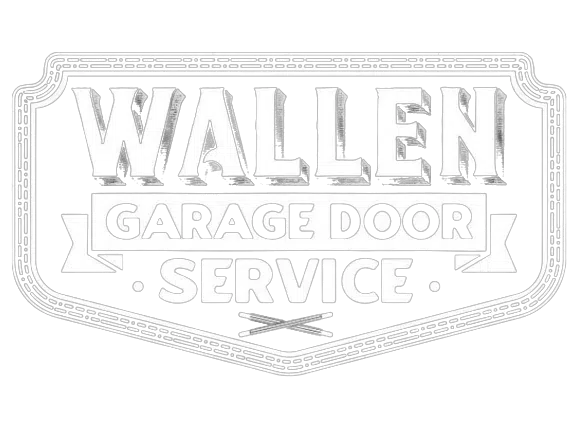Have you ever experienced the frustration of a garage door that refuses to cooperate, only to discover that the culprit is a faulty spring? If so, you’re not alone. Garage door spring issues are among the most common problems homeowners face, and knowing how to address them safely and effectively is essential.
In this comprehensive guide, we’ll explore everything you need to know about fixing your garage door spring, from understanding its role in the door’s operation to step-by-step repair instructions. But before we dive into the nitty-gritty of repairs, let’s take a moment to appreciate the importance of this often-overlooked component.
Your garage door spring may be small in size, but it carries a hefty responsibility. It’s the force behind the smooth opening and closing of your garage door, bearing the weight so you can effortlessly come and go as you please. Without a properly functioning spring, your garage door becomes more than just an inconvenience – it’s a potential safety hazard.
Understanding the intricacies of garage door spring repair isn’t just about fixing a problem when it arises; it’s about preventing issues before they occur. Regular maintenance, including inspecting and lubricating your garage door springs, can prolong their lifespan and minimize the risk of unexpected breakdowns. By investing time and effort into caring for your garage door springs now, you’ll save yourself headaches – and potentially costly repairs – down the road.
So, whether you’re facing a broken spring or simply want to ensure your garage door continues to operate smoothly, you’ve come to the right place. Let’s embark on this journey together, empowering you with the knowledge and skills to conquer your garage door spring woes once and for all.
Now let’s put on our work clothes and get to work. But first, let’s make sure we have all the information and safety measures required for a successful repair operation.
Understanding Garage Door Springs

Types of Garage Door Springs: Torsion vs. Extension
There are two main varieties of garage door springs: extension springs and torsion springs. Every variety has special traits and purposes of its own.
- Torsion Springs: In order to store energy while the garage door is closed, torsion springs are usually positioned above the door. The springs help lift the door as it opens by unwinding and releasing their stored energy. When it comes to smoother operation and durability, torsion springs are preferred over extension springs.
- Extension Springs: Extension springs are usually installed on either side of the garage door tracks and stretch or extend as the door closes. When the door is opened, the springs contract to support the weight of the door. Extension springs are more common in older garage door systems and are generally less expensive than torsion springs.
Functionality and Role in the Garage Door System
Garage door springs play a crucial role in the operation of your garage door system. Without them, the door would be too heavy to lift manually or with the assistance of the garage door opener. When you press the button to open your garage door, the springs work in tandem with the opener to lift the door smoothly and efficiently.
Torsion springs and extension springs both contribute to balancing the weight of the garage door, making it easier to open and close. Additionally, they help prevent wear and tear on other components of the garage door system, such as the tracks, rollers, and opener.
Signs of a Broken or Malfunctioning Spring
Keeping your garage door system safe and operating properly requires that you know when a garage door spring needs to be replaced or broken. Indicators that your spring could require maintenance include the following:
- Difficulty opening or closing the garage door: If your garage door suddenly becomes heavier to lift or doesn’t close properly, it could be a sign of a worn-out or broken spring.
- Unusual sounds: Listen for any loud popping or snapping noises when operating the garage door, as these could indicate a spring failure.
- Visible damage: Look for any visible damage, such as cracks, gaps, or corrosion, on the springs. Failure resulting from this could weaken the springs.
- Sagging or uneven door: If one side of the garage door appears lower than the other, it may indicate that one of the springs is damaged or broken.
By understanding the different types of garage door springs, their functionality, and the signs of a malfunctioning spring, you’ll be better equipped to identify and address issues with your garage door system before they escalate. Now, let’s delve into the safety precautions you need to take before attempting any repairs.
Safety Precautions Before Starting
Importance of Safety Gear
Prioritizing your safety is essential before you even consider adjusting your garage door springs. When handled improperly, garage door springs can result in severe injuries due to their enormous tension. Making sure you have the appropriate safety gear is therefore the first step in any repair or maintenance task.
Investing in a sturdy pair of gloves and safety glasses is non-negotiable. These will protect your hands and eyes from flying debris or accidental contact with the springs. Additionally, wearing closed-toe shoes with good traction will help prevent slips and falls while you’re working.
Remember, safety gear isn’t just for professionals – it’s for anyone brave enough to take on the challenge of garage door spring repair. So, before you grab your tools, take a moment to suit up and safeguard yourself against potential hazards.
Disconnecting Power to the Garage Door Opener
Garage door openers are powered by electricity, which means there’s a risk of electrocution if proper precautions aren’t taken. Before you begin any work on your garage door springs, it’s essential to disconnect the power to the opener.
Locate the emergency release cord or lever on the garage door opener and pull it down to disengage the opener from the door. This will prevent the opener from activating while you’re working on the springs, reducing the risk of accidents or injury.
Once you’ve disconnected the power, it’s a good idea to place a piece of tape over the wall-mounted control panel to remind yourself – and others – not to attempt to operate the door until the repairs are complete.
Stabilizing the Door to Prevent Accidents
Garage doors are heavy – there’s no denying that. And when you’re dealing with springs under tension, there’s always a risk that the door could unexpectedly slam shut. To prevent accidents and injuries, it’s essential to stabilize the door before you start working on the springs.
Using a sturdy ladder or step stool, prop the door open at a safe height, making sure it’s securely supported. You can also use clamps or locking pliers to hold the door in place while you work. Whatever method you choose, the goal is to ensure the door remains steady and doesn’t move unexpectedly during the repair process.
By taking these safety precautions before starting work on your garage door springs, you’re not only protecting yourself from potential harm but also ensuring a smoother and more successful repair process. Remember, when it comes to garage door spring repair, safety always comes first. Now that you’re equipped with the knowledge and tools to stay safe, let’s move on to the step-by-step repair guide.
Step-by-Step Repair Guide

Assessing the Problem and Identifying the Type of Spring
Before diving into the repair process, it’s crucial to accurately assess the problem with your garage door spring. Start by inspecting the spring for any visible signs of damage, such as gaps, cracks, or rust. Additionally, listen for any unusual sounds when operating the door, as these could indicate a spring issue.
Once you’ve identified the problem, determine the type of spring installed on your garage door. Torsion springs are typically mounted above the door, while extension springs are located on the sides. Knowing which type of spring you’re dealing with will help you prepare for the repair process ahead.
Gathering Necessary Tools and Replacement Parts
With the problem assessed and the type of spring identified, it’s time to gather the necessary tools and replacement parts for the repair. Here’s a basic list of what you’ll need:
- Safety gear (gloves, safety glasses, closed-toe shoes)
- Ladder or step stool
- Wrench set
- Vice grips or locking pliers
- Clamps
- Replacement spring(s)
- Lubricant
Make sure you have all the tools and parts on hand before you begin, as this will streamline the repair process and minimize any unnecessary delays.
Replacing the Spring: Detailed Instructions for Both Torsion and Extension Springs
Now comes the most critical part of the repair process – replacing the garage door spring. The specific steps will vary depending on whether you have a torsion or extension spring, so let’s break down the process for each:
- Torsion Spring Replacement:
- Separate the door from the garage door opener.
- Use vice grips to secure the torsion spring in place.
- Loosen the set screws on the winding cones and unwind the spring.
- Remove the old spring and install the new one, winding it tightly.
- Reattach the garage door opener and test the door’s balance.
- Extension Spring Replacement:
- Disconnect the garage door opener from the door.
- Clamp the door in place to prevent it from moving.
- Detach the safety cables from the extension springs.
- Unhook the old springs and install the new ones.
- Reattach the safety cables and test the door’s balance.
Testing the Door’s Balance and Functionality Post-Repair
With the new spring(s) installed, it’s time to test the door’s balance and functionality. Manually raise and lower the door a few times to ensure it moves smoothly and evenly. If the door feels heavy or doesn’t move smoothly, it may indicate an imbalance that needs to be adjusted.
Additionally, test the garage door opener to ensure it’s functioning correctly with the new spring(s) in place. If everything looks and feels good, congratulations – you’ve successfully repaired your garage door spring!
By following these step-by-step instructions and taking your time to ensure each step is completed correctly, you can safely and effectively repair your garage door spring. Remember, if you’re ever unsure or uncomfortable with any part of the process, don’t hesitate to seek professional assistance. Now, let’s move on to some common mistakes to avoid during garage door spring repair.
Common Mistakes to Avoid
Attempting Repairs Without Proper Knowledge or Experience
One of the most frequent errors made by homeowners is attempting to perform garage door spring repair without the required skills or understanding. When handled improperly, garage door springs can result in severe injuries due to their enormous tension. Should you attempt repairs without a thorough understanding of garage door springs and the right methods, you run the danger of aggravating the issue or hurting yourself.
Take some time to familiarize yourself with the specifics of garage door spring repair before jumping into a repair project. Consult an expert if you’re not sure what to do, watch tutorial videos, and study the manufacturer’s instructions. Keep in mind that your primary concern should always be safety.
Neglecting to Release Tension Safely
Releasing the tension from a garage door spring is a critical step in the repair process – and one that should never be taken lightly. Failure to release the tension safely can result in serious injury or property damage. Yet, many DIY enthusiasts overlook this step or attempt to release the tension using unsafe methods.
Before loosening or removing a garage door spring, always follow the manufacturer’s instructions and use the proper tools and techniques. This may involve winding down the spring gradually or using locking pliers to secure it in place. If you’re unsure how to release the tension safely, it’s best to leave the task to a professional.
Using Incorrect Tools or Techniques
Garage door spring repair requires specific tools and techniques to be done safely and effectively. Using the wrong tools or employing improper techniques can not only prolong the repair process but also lead to costly mistakes or accidents.
Before you begin any repair work, make sure you have the right tools for the job. This may include wrenches, vice grips, clamps, and lubricant, among others. Additionally, take the time to familiarize yourself with the proper techniques for handling and installing garage door springs. If you’re unsure of what tools or techniques to use, don’t hesitate to ask for help or seek guidance from a professional.
Ignoring Warning Signs of Further Issues
Finally, one of the most common mistakes homeowners make is ignoring warning signs of further issues with their garage door system. While replacing a broken spring may temporarily solve the problem, it’s essential to be vigilant for any additional issues that may arise.
Keep an eye out for warning signs such as unusual noises, uneven movement, or difficulty opening or closing the door. These could indicate underlying problems with other components of the garage door system, such as the tracks, rollers, or opener. Addressing these issues promptly can help prevent more extensive – and expensive – repairs down the line.
By avoiding these common mistakes and taking a proactive approach to garage door spring repair, you can ensure the safety and functionality of your garage door system for years to come. Now, let’s move on to some maintenance tips to help extend the
Maintenance Tips to Extend Spring Lifespan

Regular Inspection for Signs of Wear and Tear
Just like any other mechanical component, garage door springs are subject to wear and tear over time. To ensure they continue to operate smoothly and safely, it’s essential to conduct regular inspections for signs of damage or deterioration.
Start by visually inspecting the springs for any signs of wear, such as gaps, cracks, or rust. Pay close attention to the coils and connections, as these are common areas for weakness to develop. Additionally, listen for any unusual sounds when operating the garage door, as these could indicate issues with the springs.
Performing these inspections on a regular basis – ideally every few months – will allow you to catch any potential problems early and address them before they escalate. This proactive approach can help extend the lifespan of your garage door springs and prevent unexpected breakdowns.
Lubricating Moving Parts to Reduce Friction
One of the most effective ways to prolong the life of your garage door springs is to keep them properly lubricated. Lubrication helps reduce friction between the coils of the spring and other moving parts of the garage door system, allowing for smoother operation and less wear and tear.
To lubricate your garage door springs, start by cleaning them with a soft cloth to remove any dirt or debris. Then, apply a generous amount of garage door lubricant to the coils, being sure to cover all surfaces evenly. Avoid using WD-40 or other penetrating oils, as these can attract dirt and debris and actually increase friction over time.
Make lubricating your garage door springs a regular part of your maintenance routine – ideally every six months or so – to ensure they remain in optimal condition. Not only will this help extend their lifespan, but it will also keep your garage door operating smoothly and quietly for years to come.
Professional Maintenance Recommendations
While DIY maintenance can go a long way toward extending the lifespan of your garage door springs, there are some tasks best left to the professionals. A professional garage door technician can provide expert maintenance recommendations tailored to your specific door and spring system.
Consider scheduling a professional garage door maintenance service at least once a year to ensure your springs – as well as other components of your garage door system – are in good working order. During this service, the technician will inspect and lubricate the springs, as well as perform any necessary adjustments or repairs to keep your door operating smoothly.
Additionally, a professional technician can provide valuable advice on how to care for your garage door springs between maintenance visits, helping you avoid common pitfalls and maximize their lifespan.
By following these maintenance tips and seeking professional assistance when needed, you can ensure your garage door springs remain in top condition for years to come. Now, let’s wrap up with a conclusion that ties everything together.
Frequently Asked Question on How to Fix a Garage Door Spring
What are the signs of a broken garage door spring?
Signs of a broken garage door spring include:
- Difficulty opening or closing the door.
- Unusual sounds, such as popping or snapping noises, when operating the door.
- Visible damage to the spring, such as gaps, cracks, or rust.
- Sagging or uneven movement of the door.
Can I replace a garage door spring by myself, or do I need professional help?
Although garage door spring replacement is doable, it’s crucial to understand the hazards. When handled improperly, garage door springs can result in severe injuries due to their enormous tension. It’s advisable to get expert assistance if you’re unsure about your capacity to replace the spring securely and successfully.
How frequently should my garage door springs be inspected and maintained?
It’s recommended to inspect and maintain your garage door springs at least every six months. This includes visually inspecting the springs for signs of wear and tear, lubricating them to reduce friction, and performing any necessary adjustments or repairs. Additionally, consider scheduling a professional maintenance service at least once a year for a thorough inspection and tune-up.
What tools do I need to fix a garage door spring?
The tools needed to fix a garage door spring may vary depending on the type of spring and the specific repair required. However, some common tools include:
- Safety gear (gloves, safety glasses, closed-toe shoes)
- Wrench set
- Vice grips or locking pliers
- Clamps
- Lubricant
It’s important to use the proper tools for the job to ensure the repair is done safely and effectively.
Is it dangerous to repair a garage door spring on my own?
Repairing a garage door spring could be fatal if safety precautions are not taken. If not handled correctly, garage door springs can be extremely dangerous due to their enormous stress. Wearing safety clothing, following the manufacturer’s instructions, and using the appropriate tools and techniques are essential while repairing a garage door spring. If at any point during the process you feel unsure or nervous, it’s preferable to seek professional assistance to avoid accidents or injuries.
Conclusion
Your garage door springs may seem like small components, but they play a crucial role in the smooth operation of your garage door system. By maintaining and repairing your garage door springs regularly, you can ensure the safety, functionality, and longevity of your garage door.
Regular maintenance, including inspections, lubrication, and professional tune-ups, can help catch any potential issues early and prevent costly breakdowns. Additionally, addressing any problems with your garage door springs promptly can minimize the risk of accidents or injuries.
Safety should always come first when it comes to maintaining and repairing garage door springs. Due to their extreme tension, garage door springs can be very dangerous if not handled properly. Never hesitate to seek professional assistance if you’re unclear of how to maintain or repair your garage door springs in a safe and effective manner.
Professional garage door technicians have the knowledge, experience, and tools to handle garage door spring repair safely and efficiently. By entrusting the task to a professional, you can have peace of mind knowing that your garage door system is in good hands.
Now that you’re equipped with the knowledge and safety precautions necessary for garage door spring repair, you may feel confident enough to tackle the task yourself. If so, keep reading for detailed instructions and expert tips on how to safely and effectively repair your garage door springs.
Always remember that safety comes first. Do not hesitate to seek expert assistance if you feel uncertain or uneasy about any step of the process. You can make sure your garage door springs last for many years by emphasizing safety and adhering to the recommendations provided in this guide.






